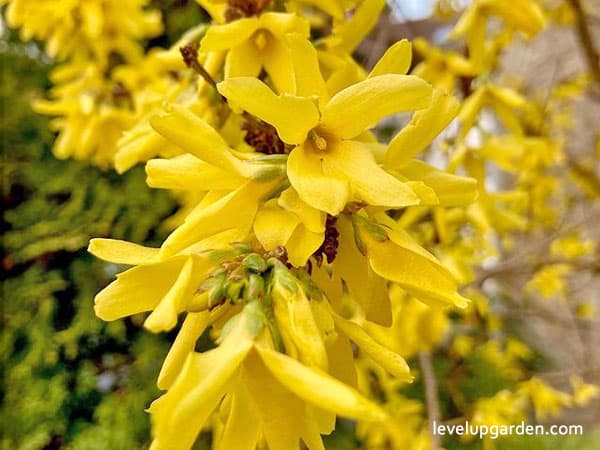Leyland Cypress is a fast-growing, upright coniferous evergreen hybrid. It grows up to 3 feet per year in its early years and adapts well to a wide variety of soil types. The reddish-brown scaly bark is attractively lined with gray-green needles. It usually lives 20 to 50 years, depending on the environment.
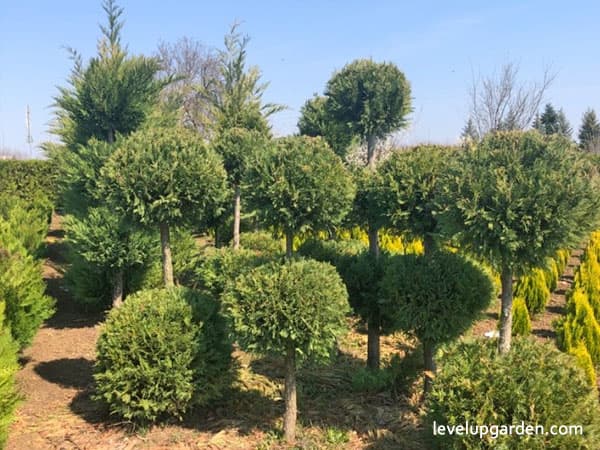
It can be used as a screening, hedge, or windbreak, but is highly susceptible to pests and diseases and requires regular pruning to maintain a tidy appearance. Symmetrical canopy and smooth outline with an identical crown form. Branches grow upright and do not droop. This strong structure is resistant to breakage. It also tolerates severe pruning well and recovers well from severe topping. In Piedmont and Coastal Plain, North Carolina, it is sometimes grown for sale as a Christmas tree.
Read on to learn more all about the fast-growing, ideal hedges and borders that provide privacy before you decide to buy and grow the Leyland Cypress trees in your beautiful garden.
I. Leyland Cypress Tree (x Hesperotropsis leylandii) Profile
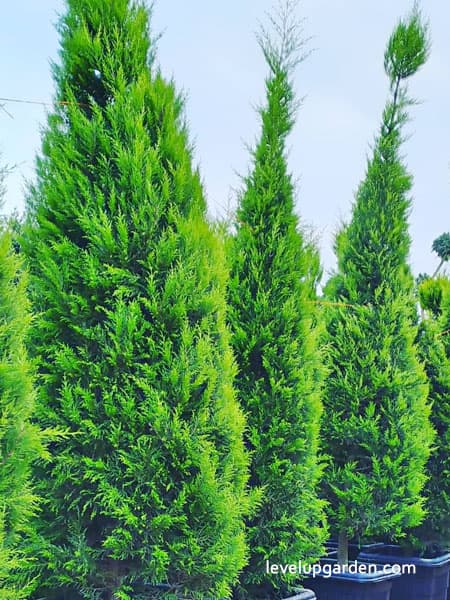
| Common Name | Leyland cypress, Leyland’s cypress |
| Botanical Name | Hesperotropsisclelandii |
| Plant Type | Coniferous evergreen tree |
| Native Area | North America |
| Hardiness Zone | 6 to 10 (USDA) |
| Mature Height | 40-60 ft. |
| Mature Width | 20-25 ft. |
| Growth Rate | Fast |
| Sunlight | Full Sun |
| Soil Type | Fertile, moist, well-drained soil |
| Soil pH | 5.0 to 8.0 (acidic to slightly alkaline) |
| Bloom Time | Non-flowering |
| Flower Color | Non-flowering |
II. Appearance
Leyland Cypress Trees are tall, conical-shaped trees that grow up to 60 ft high. They have flat green needles and grow fast. They have a widespread of about 20ft.
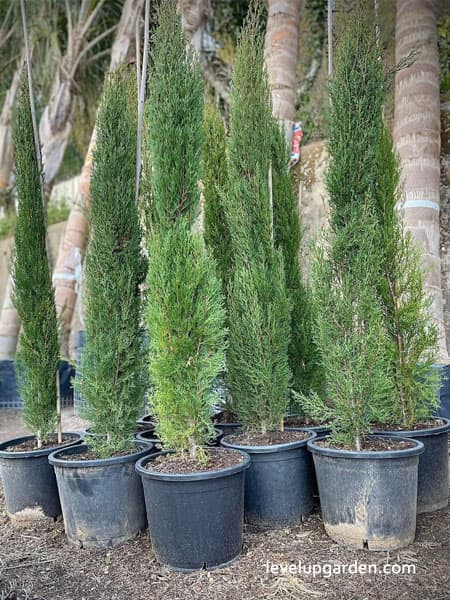
- Leaf: Leaves are scale-like up to 2 inches long, elongate, spray-shaped, blue-green, and of the same color above and below. The leaves are soft, pointed, and attached to flat twigs. They are soft green when young and eventually mature to a dark blue-green color.
- Flower color: Non-flowering
III. Growing and Care Conditions
Leyland Cypress trees are tall, straight, and columnar. They are often used as privacy hedges. Planting in a full sun site, they require evenly moist fertilized soil and grow up to 50 feet high. Their width is usually only one-third or one-fourth of their height, sometimes even less. A common landscape use is planting many Leyland Cypresses along a border, to create a privacy screen, and they are also used as windbreaks. Some homeowners take this a step farther and turn such a border planting into a formal hedge. These plants are also frequently used as Christmas Trees.
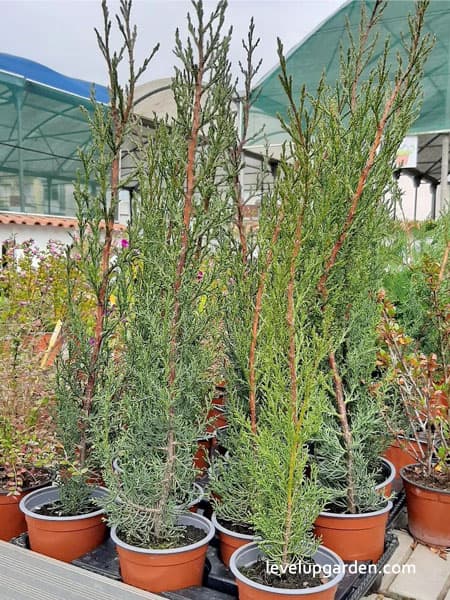
Sunlight is needed for LYCPA to grow. Watering should be done once a week. If the soil isn’t moist enough, then water needs to be applied. Fertilizer doesn’t need to be used.
- Light: Leyland Cypress tolerates both sun and shade. It grows best in full sunlight but also thrives in partial shade.
- Soil: This tree tolerates a wide variety of soils.
- Water: This tree requires a lot of water but tolerates a wide range. It grows better when there is plenty of rain. Drought affects them badly. They are very sensitive to heat and cold. You should plant different types of trees depending on what you want to grow.
- Temperature and Humidity: Leyland Cypress trees grow well in USDA hardiness zones 5 to 9, and require a sheltered environment during the winter months. Once mature, they do not need sheltering.
- Fertilizer: Fertilizing the trees around your yard helps them grow better. You should spread a general-purpose fertilizer around the drip line of each tree.
- Pests and Diseases: Leyland Cypress Trees are shallow-rooted, meaning they can fall over easily, and they’re vulnerable to cankers. Seiridium Canker causes the browning of foliage and stems. Botryosphaeria causes the browning of foliage. Cercospora causes the yellowing of foliage. All three diseases can be treated with fungicides. Keep pruners clean between cuts to prevent the spread of disease. Spray with Neem Oil.
- Planting: Trees should be planted when they’re dormant in fall. This gives them time to get established before winter hits. Planting trees too early or late could cause problems for the tree. Make sure the soil is well-drained, and make sure there’s enough space for the tree to spread out. You should space your trees out about 10 feet apart.
IV. Varieties
There are many cultivars of Leyland cypress that are identifiable by the color of their leaves. The most common types are ‘Leighton green’, ‘silver dust’, ‘Castlewellan’ and ‘Naylor’s blue’.
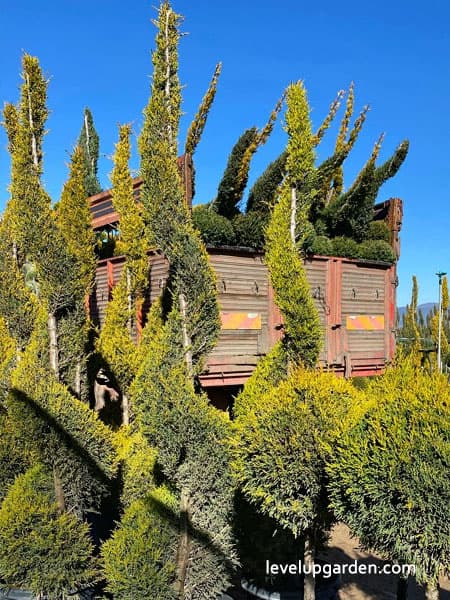
- The “Leighton Green” is often used as a Christmas tree. Its dark forest green foliage is ideal for Christmas decorations. Heavy and sturdy, this variety has a coarser appearance than other varieties.
- ‘Silver Dust’ has a similar leaf structure to ‘Leighton Green’ but with white spots on the leaves.
- ‘Naylor’s Blue’ is known for its attractive blue-gray foliage. It grows up to 60 feet tall and 10 to 15 feet wide. The scaly conifers change color with the seasons. In winter, they turn a ghostly shade of gray.
- ‘Castlewellan’ tends to grow in conical shapes. Its delicate, lacy foliage makes it a popular choice. In winter, the outside of the tree takes on a golden hue while the inside remains green.
V. Should you buy a Leyland Cypress Tree (x Hesperotropsis leylandii)?
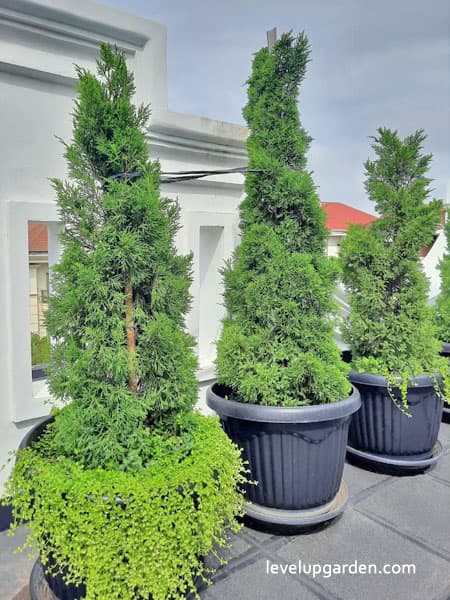
Reasons you should love the tree:
A cross between pine and oak is used as a Christmas tree. It is used in windbreaks and along boundaries. It makes a nice addition to landscapes. They are beautiful evergreen trees that grow quickly. They are great for privacy and also make nice borders for larger properties.
- Reaching a height of 6 meters, Cypress is an ideal tree for privacy.
- Its thick foliage allows it to create a dense screen over any space around the house.
- This hardy tree stays green and strong even when temperatures drop to 0 degrees Celsius.
- No pruning is necessary unless you want to use it as a hedge.
Leyland Cypress Problems you might not like to plant this tree:
Leyland Cypress’s problems include a slow growth rate, high maintenance cost, and low-quality lumber. Pruning is an important part of growing Leyland cypresses. To do this, you must prune them several times every year. When pruning, you should take care not to cut the bark too deeply. If you do prune it too much, you could end up with unsightly brown spots. Pruning in the fall or during the winter months is better than pruning in the spring because it causes less damage to the plant. In this case, the trees grew too fast for the soil around them. This could be due to a lack of water or nutrients, but we’ll assume it was just bad luck. Leyland cypresses are very long-lived, but they’re not great for hedges. They’re very susceptible to disease, and they need lots of room to grow. They’re also pretty ugly. So if you want a really beautiful hedge, go plant something else.
VI. FAQs
How fast will a Leyland cypress grow?
Leyland Cypress grows very fast, about 4 feet a year in thin soil, and if you think you’ll have a 12-foot privacy hedge in three years.
What is the best time to plant Leyland cypress trees?
Leyland Cypress is often planted using container seedlings rooted in the fall and winter, with late March being the best time to plant.
How do you take care of a Leyland Cypress plant?
Leyland Cypress requires little care. Water deeply during prolonged drought, but avoid overwatering as it can cause root rot. Regular fertilization is not required. Watch for bagworms and remove bags before larvae develop, if possible.

